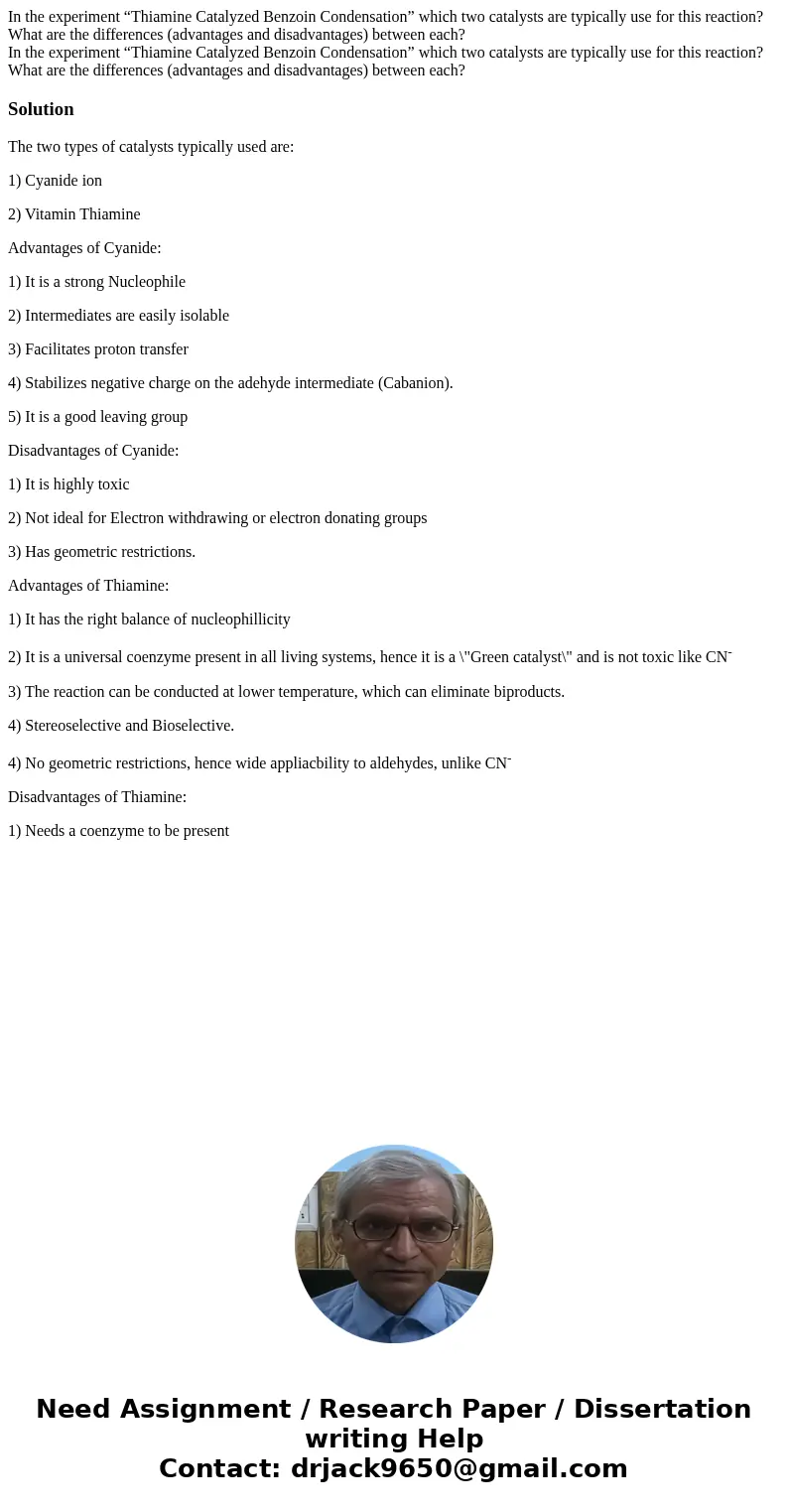In the experiment Thiamine Catalyzed Benzoin Condensation wh
Solution
The two types of catalysts typically used are:
1) Cyanide ion
2) Vitamin Thiamine
Advantages of Cyanide:
1) It is a strong Nucleophile
2) Intermediates are easily isolable
3) Facilitates proton transfer
4) Stabilizes negative charge on the adehyde intermediate (Cabanion).
5) It is a good leaving group
Disadvantages of Cyanide:
1) It is highly toxic
2) Not ideal for Electron withdrawing or electron donating groups
3) Has geometric restrictions.
Advantages of Thiamine:
1) It has the right balance of nucleophillicity
2) It is a universal coenzyme present in all living systems, hence it is a \"Green catalyst\" and is not toxic like CN-
3) The reaction can be conducted at lower temperature, which can eliminate biproducts.
4) Stereoselective and Bioselective.
4) No geometric restrictions, hence wide appliacbility to aldehydes, unlike CN-
Disadvantages of Thiamine:
1) Needs a coenzyme to be present

 Homework Sourse
Homework Sourse